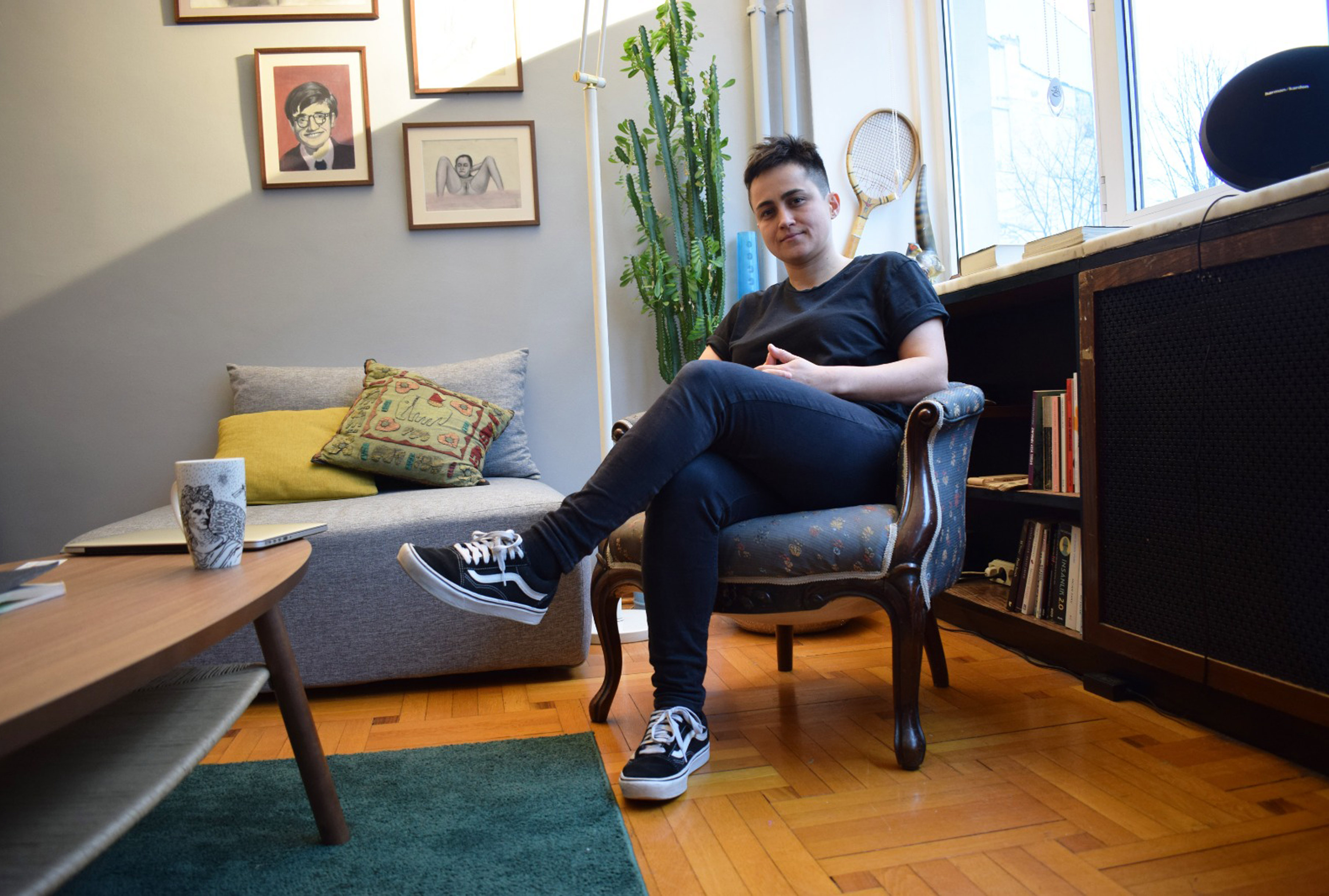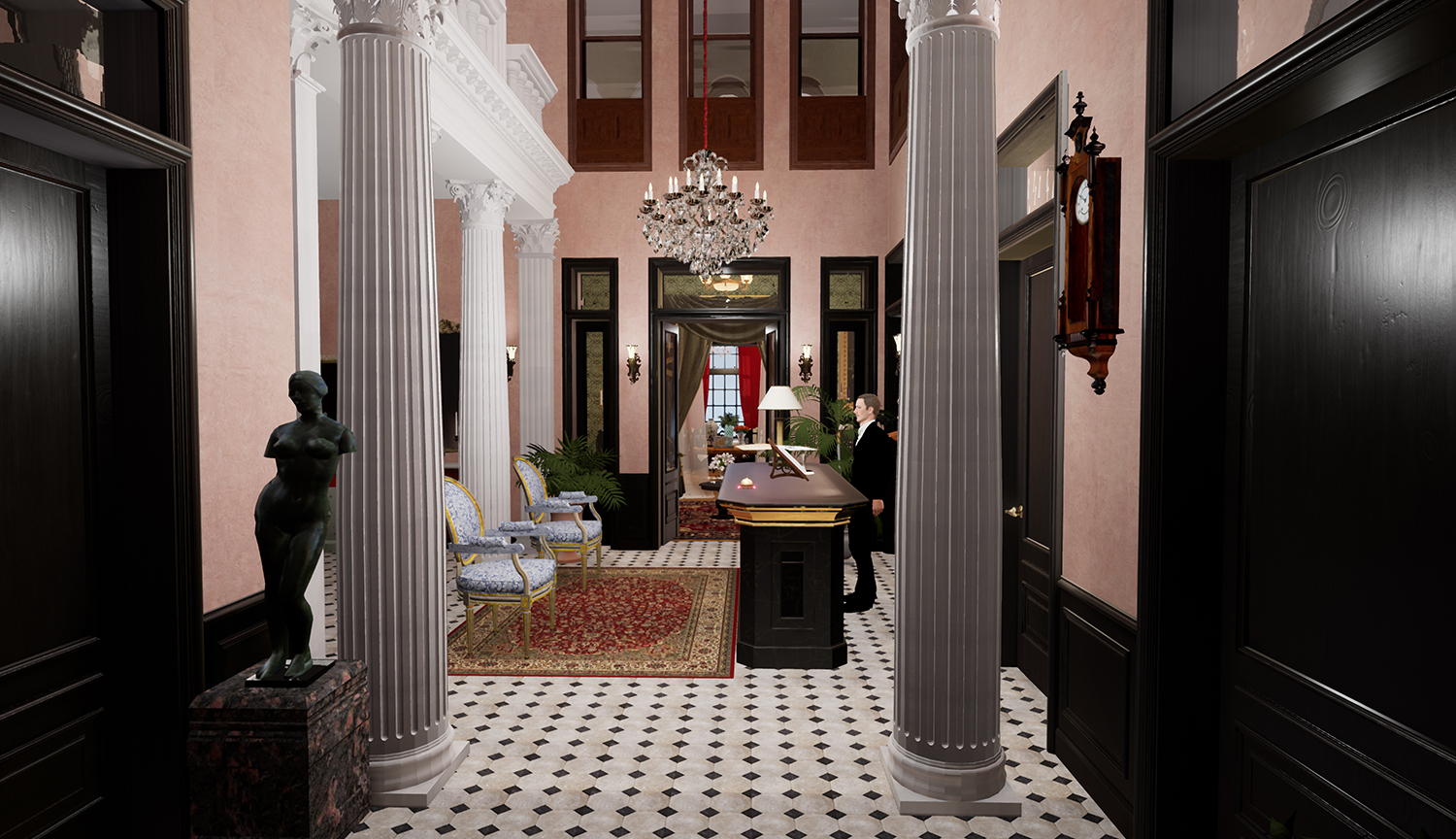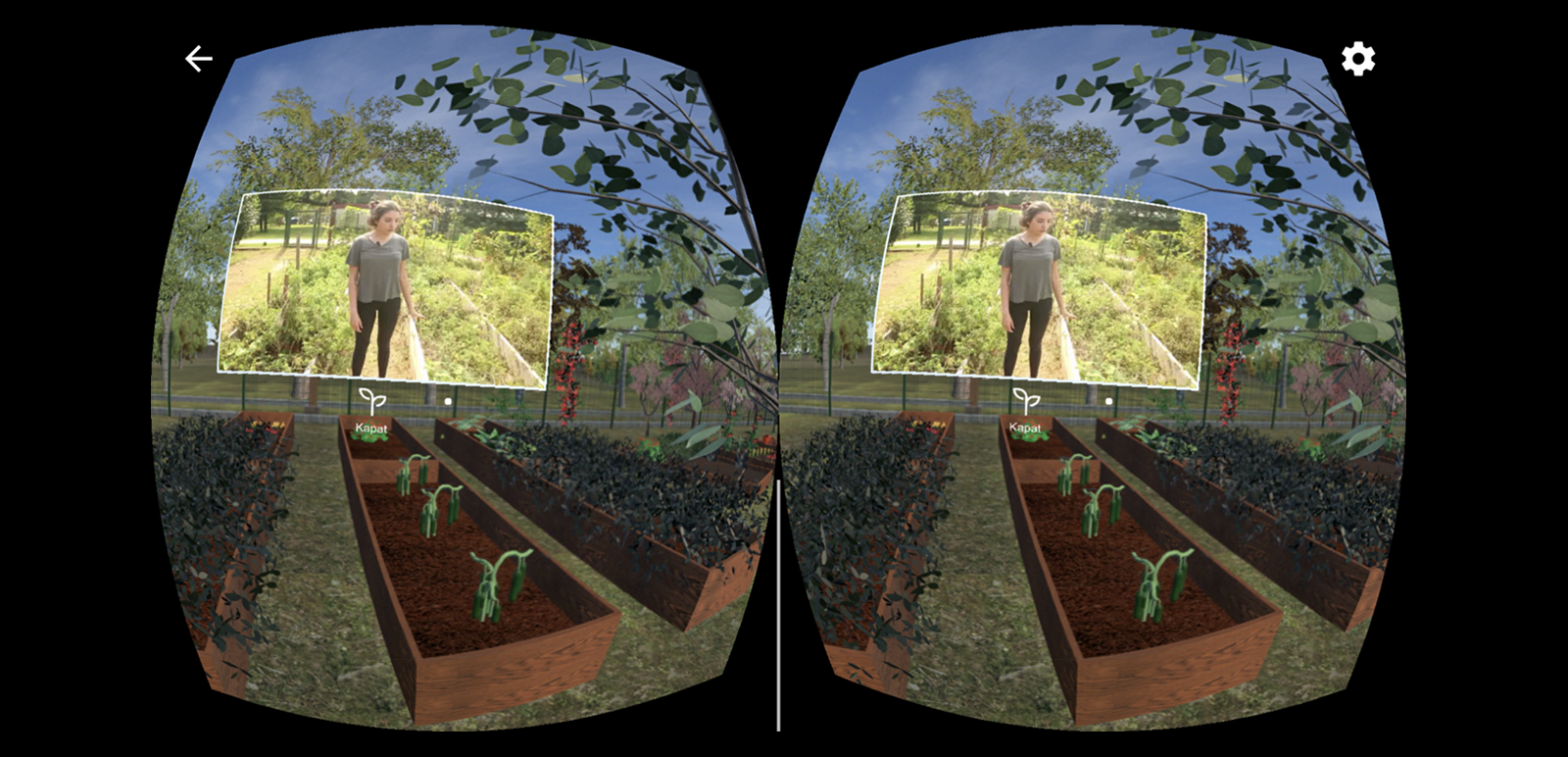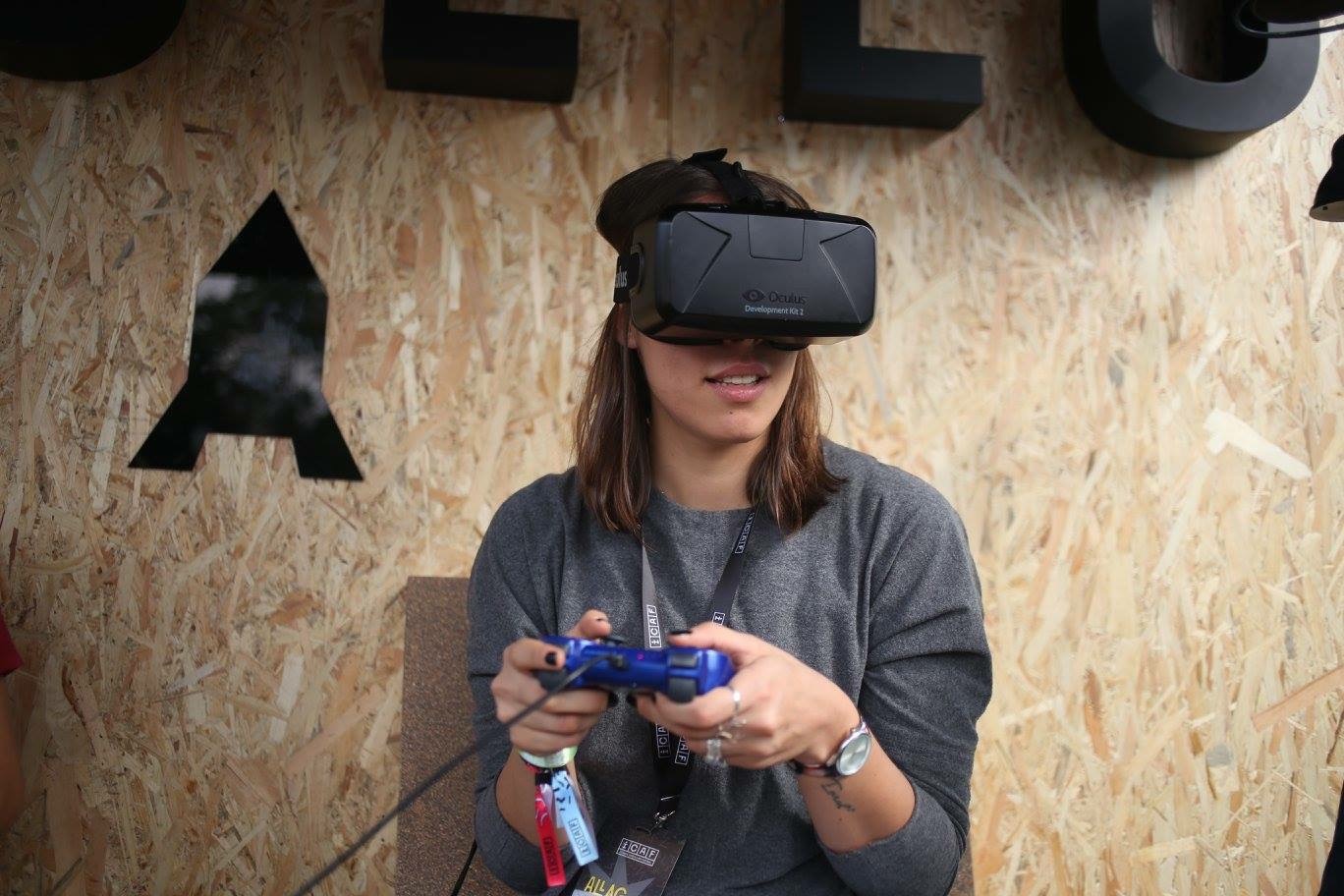BACK
İstanbul Tasarım Bienali - Design Visits Interview
31 May, 2020
Esra Akdere. Photo: Gizem Özkol
Let’s start from the beginning, from the story of how Apollo was founded. Where does the name come from? And you also refer to team members as astronauts. What is the story behind that?
Esra Akdere: Ayşegül and I started off in 2010 with an idea to found a multidisciplinary design studio. She is an architect, and I’m a software developer, so Ayşegül designs the physical world while I design the digital world. We thought space was the only place these two worlds could collide, and founded Apollo.
Apollo is the name of the God of fine arts, and the renowned space project of NASA. The on-board software for NASA’s Apollo programme was developed by a computer scientist named Margaret Hamilton, who is also a woman. So the word has many references and connotations.
Ayşegül Karaman: For me it is also very strong phonetically. I remember searching for a word that had those ‘a’ and ‘o’ sounds. We had added “digital solutions and architecture” underneath, then took it off.
Esra: Just like how a rocket drops off its modules we are gradually getting rid of the things we find excessive. (laughs)
What kind of work did you start doing after founding the studio?
Esra: We started with the same things we did before, things like logos, corporate identities, and websites. Ayşegül was also working on architecture and product design. In a way we were able to predict that these could come together within virtual reality or augmented reality.
So we shifted our focus there and started to work on game design. While trying to learn programmes such as Unreal Engine and Unity, we saw that different disciplines and generations were interested in the same things. We created a project on virtual reality called Project Nebula.
Ayşegül: This was a trial, and had the potential to turn into a social responsibility project in time. We turned it into a workshop with three different generations and applied to the Amber Art and Technology Festival.

Ayşegül Karaman. Photo: Gizem Özkol
You’re talking about the children’s workshop, right?
Esra: Not only children. We wanted to bring together people in their 10s, 20s, and 30s, and have them develop different approaches. Kids solve the design problems we give them with their unclouded minds. Young professionals (students or newly graduates of architecture or industrial design) turn those solutions into 3D designs. And we place these 3D models into virtual reality together with people from an older generation, those who are in their 30s. So we start to stroll around the dreams, the solutions of children.
We did this for the first time in 2015. There we realised the children’s output were closely related with the input they were exposed to. The solutions they posed had to do with the cartoons they watched, the books they read. When they started talking about wars or houses that fly, we wondered if all kids had similar thoughts and went to the Hacıhüsrev neighbourhood in Istanbul. The kids there obviously talked about their own needs. We did not give them design problems to solve, rather asked what their dreams were, and one of them said “a stocked fridge”. Another claimed she would draw more if she had more room. After hearing more about that state of being tightened, being laid up, we started thinking about formulating a training programme or method of learning. The kids started learning about the things architects or industrial designers do, about how virtual reality works, and we later heard them saying that they wanted to do another workshop or become architects themselves. So we decided to turn this into a social responsibility project and carry on in that direction.
Then we started doing research on the situation of Syrian kids. We led workshops with different kids from different backgrounds.

Image: Playmaker Workshop, 2017
So a project that began with a space metaphor, something vastly vertical, turned into a horizontal issue of accessibility.
Ayşegül: That is correct. The aim of the workshop was different in the beginning, we realised its potential to bring together different generations at a later stage. Amber’s motto at the time was “I work, therefore I am.” We named this project Imaginary Offices Workshop and formulated it around a reflection on how work spaces would be in the future. Curious about how spaces that shift with technology resonate in their imagination, we decided to direct this question to children. Then we realised its potential to be turned into a social responsibility project, as Esra explained.
In fact we received many feedbacks about how this should be added within the curriculum in schools. Instead of leading singular projects we began to search for ways for turning it into a mechanism, a method that can also go on independently.
Esra: We try to create value with each work, hoping to achieve a depth that would make people think, providing an analogue aspect while showing something digital.
Project Nebula is a full-day workshop. It begins at 10 in the morning, and goes on until 6 in the evening. Since it required an architect or industrial designer for each kid, the costs were rather high. We worked towards making it smaller, more compact.
Ayşegül: Project Nebula helped us realise that we were in fact designing experiences. This carried on in our work with brands and institutions. Turns out this was what we were hoping to achieve with Esra. As an architect I design a space in the digital world or lead the design process of a space, and Esra develops the digital infrastructure. One shouldn’t think of this solely as software; an experience is involved here as well. With each work we witness a space being created in a digital environment, and an interactive element being added. This is a back and forth process.
After that we started to take a whole new level of pleasure from doing this. We recently collaborated with Pera Museum, making use of the advantages provided by this technology to go back to the past, digitally reconstructing the ground floor and one of the rooms of Bristol Hotel, which used to be located at Meşrutiyet Street, being faithful to the features of that specific era.

Image: Reconstruction of Bristol Hotel
Ayşegül: Pera Museum is currently situated at the building originally conceived as the hotel. Only the façade has been preserved; nothing else is original, everything has been demolished and rebuilt. We tried to reach every data on the building’s original state. There was a construction surveying recorded by Doğan Hasol in 1980, we generated a plan diagram based on that. Then again, because we didn’t have a cross section, we had no idea about the storey height. In order to determine those heights we measured and based our estimation on the façade. There were also some references such as the adverts in the Levantine newspapers of the time. “The Bristol Hotel will open, it has marble staircases, and a dining hall for 100 people.” Creating a venue based on these written sources were a whole new experience for us. There were no photographs that show its original state. Pera Palace and Grand Hotel de Londres were our two main references, since they were contemporaries of the Bristol Hotel. That was an era in which structures and interiors with neoclassic and eclectic elements were being built. For instance we remodeled a furniture from Pera Palace and a chandelier from Grand Hotel de Londres, and put them within our reconstruction. We designed a venue from scratch in collaboration with Pera Museum’s administrators, pushing ideas through step-by-step processes. I compare this to reviving a scene from a period drama and doing the art direction; we did so in a digital medium. Since every element we used had a reference, the process was rather slow; we did archival research and worked with advisors, which took a long time. We would like to gamify the venue and create a feeling of “I was back in that age, I was in the lobby, I took the key” within people who experience it.
The instructions are given only by haptic sensations, vibrations and 360-degree virtual sound installations. For instance you hear a buzzing sound in the lobby, the sound of the dining hall reaches your ears, and it swells as you get closer. Whereas if you get closer to the entrance you hear the sound of horsecars. Sound design played a huge role in this project.
Esra: There was a social responsibility project we did for Saint-Joseph High School. Kadıköy Municipality had given them one-quarter of an acre of land in Fenerbahçe Park, and the school was building a “community garden” there. This was a project that served to teach people about permaculture, and they were sending the products to those in need. They actually wanted for this to be heard, and we suggested turning it into a mobile app. So people who couldn’t be there would also learn about permaculture, and could follow the trainings. Everything planted on that one-quarter of an acre of land could also be seen in virtual reality, and there were also eight or nine training videos.

Image: Saint-Joseph, Community Garden
Before coming here we were already intrigued by your works on experience design and interaction design, and wanted to ask you about them. As far as I can see the works that excite you the most have been around these two terms.
Ayşegül: Yes, and another example on my mind is the Istanbul Comics and Art Festival, in which we participated twice. Even though we had a tiny booth people were really interested in our work. The first year we designed a digital art gallery called VR Art Gallery. People drew stuff, and the results were unbelievable since most of the people there were illustrators. We took photos of the drawings, and placed them within slots we had prepared beforehand, creating an image of that drawing inside a frame within the digital space. So they could see their own work in a gallery. This experience lasted 15 to 20 minutes, and since around 200 people came to our booth each day, all got to experience it.
For the second year we developed an experience titled VR Storytelling. We found 360-degree videos that made one feels as if they were on a mountain top or by the sea. We created three dimensional objects to help with the transition from one scenery to another. These were unrelated with the context, there were different objects such as socks or pens. One would transfer into another video after looking at them for five seconds. There were a total of 11 videos, and people wrote or drew them as stories after their experience. The works were hung up around the booth, turning the surroundings into a gallery.
We also worked with Mixer Art Gallery in a project called Camera Obscura. We had five selected artists do performances there. As they wore the glass and performed within the digital space others were watching, and we thought those body movements were already performances. We were also simultaneously screening the footage from inside the digital space.

Image: VR Art Gallery
Speaking of performances, can you tell us a bit about Apollo Space?
Ayşegül: After getting into these experience design works we realised we needed a bigger space. We wanted to include other fields within the multidisciplinarity already present between us. Back then there weren’t many boutique ventures as such. We made it happen and it started attracting attention. Our initial thought was for Apollo Space to be present within the “underground” culture in Galata, but it outgrew us; it was featured in publications, people started calling us and asking if they could realise their own events. The dream was to maintain a certain interaction and form new networks there. We brought together artists who had not collaborated before and had them try out new things. It was quite a success too, for instance we merged yoga and dance, two fields that would not normally go together, created opportunities as such.
There were already big concert halls in which artists could play their music, we weren’t competing with them. What mattered to us was those musicians coming to our space and trying out that thing they had always wanted but never had the chance. When they asked us things like “We have a band of three, we have been practicing in the studio but have not played anywhere yet, can we come and improvise there?” we would say “Sure, go ahead.” Again this was a case of multidisciplinarity.
You left Galata after two and a half years. What lies ahead for you?
Esra: We see Apollo Space as a community, rather than a venue. That “space” in the name does not refer to a physical place, but a new area we opened up. So we can do it somewhere else, or even here, in our own home. It can be done somewhere abroad, as well. We are currently in a state of fallowing, our search continues but there is no rush.
Ayşegül: The growth of fields such as new media has been quite steady in Turkey, but I think that will change. This has to do with brands or institutions seeing it as a priority. They are not accustomed to new media, and there’s always a certain ambiguity about budgets; one quotes a price and the other confirms the payment, but neither are sure of what they are doing. We are in fact in a time in which we can create much more; there are many ideas floating around but not that many producers. Hopefully these numbers will rise.
We recently participated in KARMA Lab, realised by Koç University, where we had a chance to crosscheck our steps in a way. We produced something there and now we want to present it to the municipality.
What kind of project?
Esra: It resembles Pokémon GO in a way. You find recycling spots, learn about their locations, and gather points.
Ayşegül: We wanted to lead people towards recycling, raise that awareness, encourage them to take their domestic waste to those bins, and gamify the whole process. A potential problem would be the overheating of devices, just like in Pokémon GO, so we took some precautions. Instead of using your device throughout the whole way you open the augmented reality mode only when you’re by the dumpster, then try to locate the virtual plastic bottles and place them in the bin. We are still considering ways to collaborate with brands and municipalities, and to develop new “carrots and sticks” for the game.
The idea occurred to us when we saw the smart recycling bin in the Şişhane metro stop in Istanbul, which allows one to place plastic bottles in return for refilled transportation cards. We frequently come across older women bringing plastic bottles in large sacks. So we thought everybody would be willing to participate in this if we could turn it into a game and have a reward mechanism such as topping up transportation cards.
Click here for Apollo 212's website, and here to watch their videos.
Source: https://tasarimbienali.iksv.org/tr/soylesiler/tasarim-ziyaretleri-ufuk-baris-mutlu